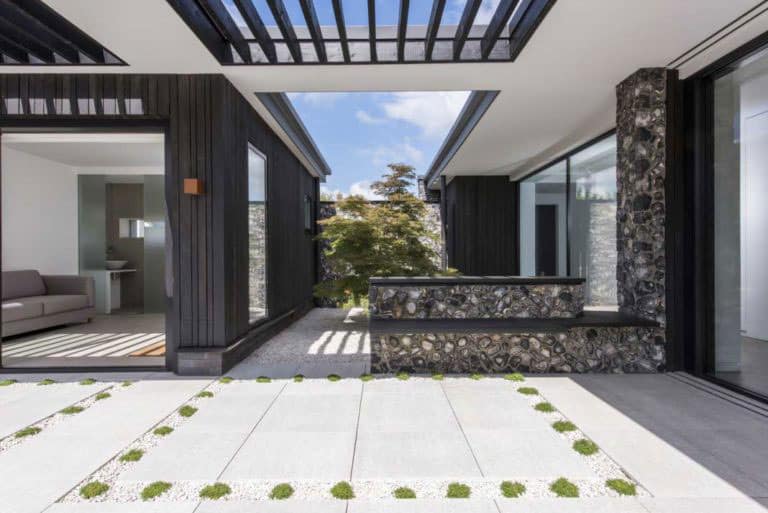With energy bills accelerating and carbon reduction targets needing to be achieved, the thermal efficiency of buildings is a hot topic. Is exterior cladding a way to heighten thermal performance?
Does Exterior Cladding Enhance Thermal Performance?
The majority of energy used in domestic dwellings is for heating. So, to reduce consumption and bills, we need better insulation and ways to capture heat. New builds have to comply with increasingly higher standards of efficiency, can exterior cladding play a part in this?
The thermal performance of a building is measured as a U Value. In modern properties, achieving a low U value is determined by excellence in structural design, building materials and construction techniques. The International Standard BS EN ISO 6946 for thermal performance states that any layers outside the breather layer will not be included when calculating the U-value. This means that the impact of exterior cladding isn’t recognised.
This doesn’t mean that timber cladding doesn’t enhance thermal efficiency. However, it does mean that to achieve substantial increases in energy efficiency, we need to engage in more fundamental changes to building design and construction.

Retrofitting Old Properties with Exterior Cladding
It is a different matter when retrofitting old properties. Exterior timber cladding, coupled with insulation, is accepted as a way to boost thermal efficiency in property renovations. It is a solution used when the walls of a building are poorly insulated and unsuitable for cavity fill insulation. If adding internal insulation will impact significant internal features or make the room too small, the external cladding will help to maintain internal ambient temperatures.
We can conclude from this that, although not taken into account when calculating U-values, exterior cladding does enhance the thermal efficiency of buildings.
What are the Exterior Timber Cladding Options?
Whether included in the architectural design of a new build or retrofitted onto older buildings, exterior cladding adds aesthetic appeal, as well as thermal insulation. However, there is a range of different types of exterior timber cladding options, so which do you pick? Our guide helps you make an informed decision.
If you are looking to clad a building in timber, there are four main options:
- Softwood Cladding
- Hardwood Cladding
- Modified Wood Cladding
- Wood Effect Composite Board
Timber cladding can take the form of shingles, but is most commonly planks of wood. These can be installed vertically, horizontally or even diagonally! At this stage, we want to emphasise that the performance of any exterior cladding is dependent on professional installation.
Let’s explore each option in greater detail.

Softwood Cladding
Most softwoods aren’t suitable for exterior use, however, there are a few exceptions; Red Cedar, Larch and Douglas Fir. These timbers contain natural oils or resins which increase moisture resistance and durability. Whilst all wood is hygroscopic, meaning it shrinks or expands with fluctuations in humidity and moisture, these three softwoods are in the minimal movement class.
When a surface treatment or Yakisugi (a controlled burning technique) is applied, these softwoods are protected from moisture and are long-lasting.
Hardwood Cladding
Oak has long been used in the construction of many long-standing buildings. It was once one of the most readily available building materials and has a reputation for being strong, durable and of premium quality. As a slow-growing tree, the oak is dense and impermeable, making it stable and resistant to weather.
Despite its natural properties, additional finish applications will enhance the longevity of hardwood and reduce the need for maintenance.
Modified Wood Cladding
Modified wood is typically pine, which has been chemically altered to enhance its stability, durability and performance. The timber is impregnated with chemicals that bind the water cells. This results in a strong, maintenance-free timber range, which includes Accoya® and Kebony.
Modified Wood offers all of the desirable aspects of timber, whilst minimising the disadvantages.
Composite Board Exterior Cladding
Composite board is manufactured to have the appearance of painted timber cladding, yet it is not a wood product. It can be formed from cement and fibres, recycled plastic or, in the case of Millboard, polyurethane resin, mineral stone powder and fibre glass. The result is maintenance-free timber-effect cladding.
Exterior Cladding Specialists
Exterior Solutions Ltd is a leading manufacturer and supplier of exterior cladding. We are renowned for our market-leading range of Shou Sugi Ban® charred timber cladding which includes Red Cedar, Larch, Douglas Fir, Oak, Accoya® Kebony and Yukari.
Our timbers are naturally preserved using the traditional Japanese technique of Yakisugi; controlled charring. This greatly increases their resilience and longevity, making them a practical and highly desirable option for exterior cladding. They have been specified for a wide range of new builds and property renovations, including award-winning developments.
For further information and to request samples, please contact us on 01494 711800.
